Lorsqu'il s'agit de créer des produits qui se distinguent sur le marché, le choix des ingrédients est crucial. C'est particulièrement vrai pour les produits qui nécessitent une texture ou une consistance spécifique. La gomme gellane est l'un de ces ingrédients qui sont devenus incontournables dans diverses industries, de l'alimentation et des boissons aux cosmétiques. Cependant, toutes les gommes gellanes ne sont pas équivalentes. Le choix entre les gommes à faible teneur en acyle et les gommes gomme gellane à haute teneur en acyle peut avoir un impact significatif sur la qualité du produit final et son attrait pour le consommateur. Dans ce guide, nous allons nous pencher sur les nuances de ces deux formes de gomme gellane, présentées par Shine, l'un des principaux fabricants de gélatine gélifiée. gomme gellane fabricants et les fournisseurs.

La gomme gellane, un agent gélifiant polyvalent, est réputée pour sa capacité à créer une large gamme de textures, allant de fermes et cassantes à douces et élastiques. Cette variabilité en fait un ingrédient essentiel pour les développeurs de produits qui cherchent à innover ou à améliorer la texture et la stabilité de leurs produits. Toutefois, le choix entre une gomme gellane à faible teneur en acyle et une gomme gellane à forte teneur en acyle n'est pas simplement une décision technique ; il s'agit de comprendre l'expérience sensorielle que vous souhaitez offrir à vos consommateurs. Que vous travailliez sur une nouvelle boisson, un produit laitier ou même un substitut de viande à base de plantes, le type de gomme gellane que vous choisissez peut faire la différence entre un bon et un excellent produit.
La gomme gellane à faible teneur en acyle est connue pour produire des gels fermes et cassants, ce qui est idéal pour les produits qui nécessitent des textures précises, tels que les desserts structurés ou les boissons innovantes. Sa capacité à créer des gels clairs et stables à de faibles concentrations en fait l'un des produits préférés des technologues alimentaires et des concepteurs de boissons qui recherchent la clarté et la stabilité sans compromettre le goût ou l'apparence.
En revanche, la gomme gellane à haute teneur en acyle forme des gels souples et élastiques, ce qui la rend idéale pour les produits qui exigent une texture plus souple, tels que les produits laitiers ou les bonbons gélifiés. Sa grande élasticité et sa capacité à résister à différentes conditions de traitement, comme la chaleur élevée ou les environnements acides, en font un choix polyvalent pour une large gamme d'applications.
Le choix entre une gomme gellane à faible teneur en acyle et une gomme gellane à forte teneur en acyle implique la prise en compte de divers facteurs, notamment la texture, la clarté, la stabilité et les conditions de traitement souhaitées pour votre produit. Shine, en tant que fournisseur de premier plan de gomme gellane à faible acyle et à forte acyle, offre ses connaissances et son expertise pour aider les fabricants à faire le meilleur choix en fonction de leurs besoins spécifiques. Un partenariat avec des fournisseurs de gomme gellane expérimentés peut fournir des conseils précieux pour naviguer dans ces choix, en veillant à ce que votre produit atteigne les attributs sensoriels souhaités et se démarque sur un marché concurrentiel.
En conclusion, le choix entre la gomme gellane à faible teneur en acyle et la gomme gellane à forte teneur en acyle est crucial pour les développeurs de produits qui souhaitent améliorer la qualité et l'attrait de leurs produits. En comprenant les propriétés et les applications uniques de chaque type de gomme gellane, les fabricants peuvent prendre des décisions éclairées qui correspondent aux objectifs de leurs produits. Shine, avec sa gamme complète de solutions de gomme gellane et son expertise approfondie de l'industrie, est votre partenaire idéal dans ce voyage vers la création de produits exceptionnels qui trouvent un écho auprès des consommateurs.
Comprendre la gomme gellane
La gomme gellane, une puissance dans le monde des gélifiants, a révolutionné l'industrie alimentaire et des boissons, entre autres. Découverte dans les étangs à nénuphars de Pennsylvanie dans les années 1970, cette gomme polysaccharide microbienne est depuis devenue un ingrédient de base pour Shine, une marque leader du secteur. La polyvalence de la gomme gellane réside dans sa capacité à créer une large gamme de textures, allant de fermes et cassantes à douces et élastiques, ce qui en fait un outil inestimable pour les développeurs de produits.
À la base, la gomme gellane est produite par fermentation par la bactérie Sphingomonas elodea. Ce processus a été perfectionné par les fabricants de gomme gellane, dont Shine, pour produire deux types distincts de gomme gellane : La gomme gellane à faible taux d'acyle et la gomme gellane à taux d'acyle élevé. Chaque type offre des propriétés uniques qui peuvent être exploitées pour obtenir des textures et des expériences sensorielles spécifiques dans les aliments, les boissons et autres.
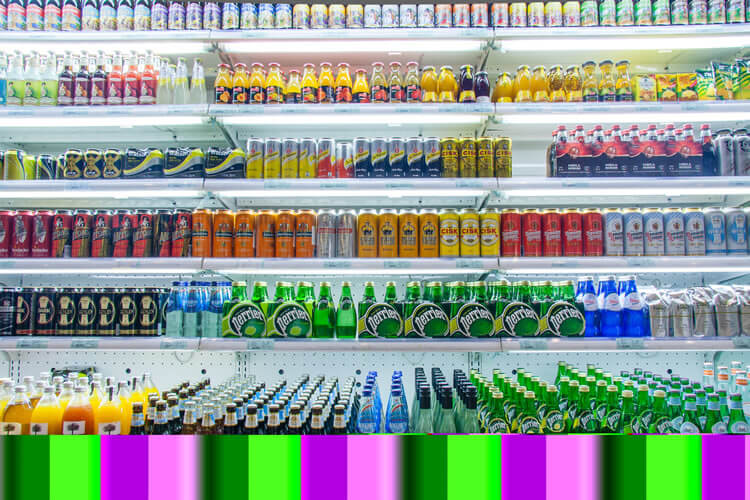
La gomme gellane à faible teneur en acyle est connue pour sa capacité à créer des gels fermes et cassants. Cette caractéristique la rend particulièrement adaptée aux applications nécessitant un contrôle précis de la texture, telles que les gelées, les desserts structurés et même certaines applications non alimentaires comme les milieux microbiologiques. En revanche, la gomme gellane à haute teneur en acyle forme des gels souples et élastiques, idéaux pour les produits qui bénéficient d'une texture plus souple, comme les produits laitiers et les substituts de lait à base de plantes.
Le choix entre la gomme gellane à faible acyle et la gomme gellane à forte acyle dépend de divers facteurs, notamment la texture, la clarté et la stabilité souhaitées pour le produit final. Les fournisseurs de gomme gellane, dont Shine, travaillent en étroite collaboration avec les développeurs de produits pour sélectionner le type de gomme gellane qui répondra à leurs besoins spécifiques. La polyvalence de la gomme gellane, associée à l'expertise des fournisseurs, permet de formuler des produits innovants qui peuvent se démarquer sur un marché concurrentiel.
Comprendre les propriétés et les applications de la gomme gellane à faible acyle et à forte acyle est essentiel pour les fabricants qui cherchent à innover ou à améliorer leurs produits. Shine, grâce à son engagement en faveur de la qualité et de l'innovation, est à l'avant-garde des fabricants de gomme gellane, offrant des solutions complètes et un soutien pour une large gamme d'applications.
Gomme gellane à faible teneur en acyle : Propriétés et utilisations
La gomme gellane à faible teneur en acyle, un produit qui a connu un regain de popularité dans diverses industries, témoigne de l'innovation et de la qualité que Shine, une marque leader sur le marché de la gomme gellane, représente. Contrairement à son homologue, la gomme gellane à haute teneur en acyle, la gomme gellane à faible teneur en acyle est connue pour sa capacité à produire des gels fermes et cassants, ce qui en a fait un ingrédient de choix pour les fabricants de produits alimentaires et de boissons qui souhaitent obtenir des textures précises dans leurs produits.
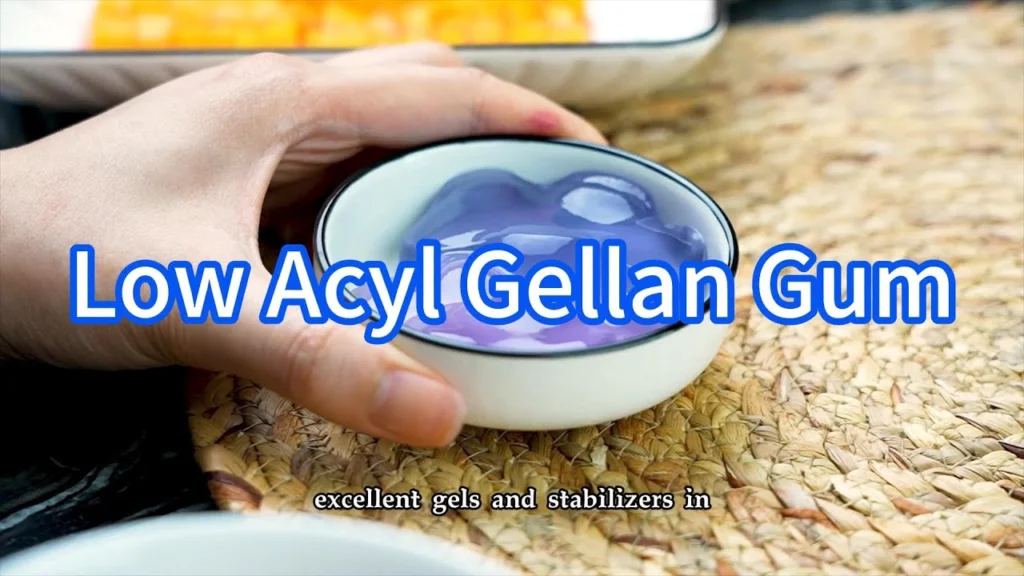
Les propriétés uniques de la gomme gellane à faible teneur en acyle découlent de sa faible teneur en acyle, qui influe considérablement sur la résistance, la clarté et la stabilité thermique du gel. Cela en fait un choix idéal pour les applications qui nécessitent des gels d'apparence claire et une texture solide et rigide. Les fabricants de gomme gellane, dont Shine, ont perfectionné le processus de production afin de garantir que la gomme gellane à faible teneur en acyle réponde aux normes les plus strictes en matière de qualité et d'uniformité.
L'un des principaux avantages de l'utilisation de la gomme gellane faiblement acylée dans la formulation des produits est sa polyvalence. Elle peut être utilisée dans une large gamme d'applications, des gelées et confiseries aux sauces salées et alternatives laitières. Cette polyvalence est encore renforcée par sa compatibilité avec d'autres hydrocolloïdes, ce qui permet de créer des textures complexes qui peuvent distinguer un produit sur un marché concurrentiel.
Le choix du bon fournisseur de gomme gellane est crucial pour les entreprises qui souhaitent incorporer de la gomme gellane à faible teneur en acyle dans leurs produits. Les fournisseurs tels que Shine ne se contentent pas de fournir de la gomme gellane de haute qualité, ils proposent également une assistance technique pour aider les fabricants à optimiser leurs formulations. Ce partenariat entre les fournisseurs de gomme gellane et les fabricants est essentiel pour innover et améliorer les offres de produits.
En conclusion, la gomme gellane faiblement acylée offre une combinaison unique de propriétés qui en font un ingrédient précieux pour la création de produits aux textures et à la clarté précises. Que vous soyez un petit producteur artisanal ou un fabricant à grande échelle, un partenariat avec un fournisseur réputé comme Shine peut vous aider à tirer parti des avantages de la gomme gellane à faible teneur en acyle pour améliorer la qualité et l'attrait de vos produits.
Gomme gellane à haute teneur en acyle : Propriétés et utilisations
Lorsqu'il s'agit du monde des gélifiants, Gomme gellane à haute teneur en acyle se distingue par ses propriétés uniques et son large éventail d'applications. Contrairement à son homologue, la gomme gellane à faible teneur en acyle, qui crée des gels fermes et cassants, la gomme gellane à forte teneur en acyle est réputée pour sa capacité à former des gels souples et élastiques. Cette différence de texture ouvre la voie à une pléthore d'utilisations, en particulier dans les industries où la flexibilité et une sensation délicate en bouche sont primordiales.
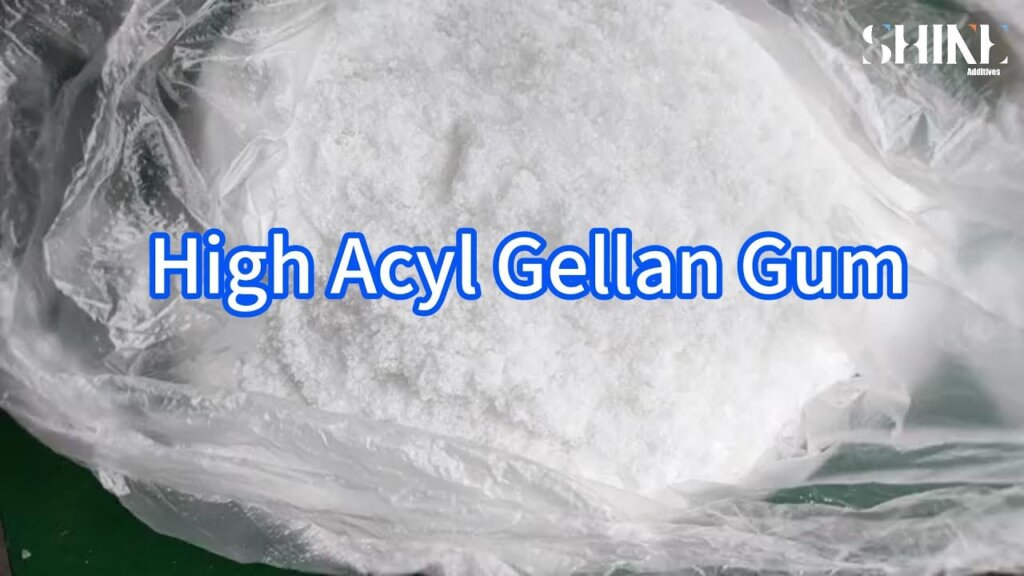
Fabriqué par des leaders Gomme gellane Fabricants Comme Shine, la gomme gellane à haute teneur en acyle est un produit issu de processus de fermentation avancés. C'est sa structure moléculaire qui lui confère sa capacité à former des gels souples et élastiques. Cette caractéristique est particulièrement importante dans l'industrie laitière, où la gomme gellane à haute teneur en acyle est utilisée pour améliorer la texture de produits tels que les yaourts, les fromages à la crème et les substituts de lait à base de plantes. Sa capacité à résister à différentes températures et niveaux de pH sans compromettre l'intégrité du gel en fait un ingrédient polyvalent dans le monde culinaire.
Mais les utilisations de la gomme gellane à haute teneur en acyle ne se limitent pas au rayon des produits laitiers. Les fabricants de boissons se tournent également vers cet agent gélifiant pour améliorer la suspension des particules dans les boissons, garantissant ainsi une texture et un aspect homogènes. En outre, Fournisseurs de gomme gellane ont constaté sa popularité croissante dans les recettes végétaliennes et à base de plantes en tant que stabilisateur et épaississant, permettant d'imiter la texture des produits traditionnels à base d'animaux.
La décision d'utiliser de la gomme gellane à haute teneur en acyle ou à faible teneur en acyle se résume en fin de compte aux besoins spécifiques de votre produit. Des facteurs tels que la texture, la clarté et la stabilité souhaitées jouent un rôle crucial dans ce choix. Pour les applications nécessitant une texture plus douce et plus élastique, la gomme gellane à haute teneur en acyle, avec ses propriétés uniques, devient l'option de choix. Sa capacité à créer une sensation en bouche douce et agréable sans compromettre la stabilité du produit en fait un atout inestimable dans le développement d'aliments et de boissons de haute qualité.
En conclusion, la sélection de la gomme gellane à haute teneur en acyle auprès de fabricants de gomme gellane réputés tels que Shine peut améliorer la qualité d'une large gamme de produits. Ses diverses applications, de l'amélioration des produits laitiers à l'amélioration de la texture des boissons, démontrent sa polyvalence et son importance dans l'industrie alimentaire. La demande d'ingrédients alimentaires innovants et de haute qualité ne cessant de croître, il est essentiel pour les fabricants désireux de rester à la pointe du marché de comprendre les propriétés et les utilisations de la gomme gellane à haute teneur en acyle.
Facteurs à prendre en compte lors du choix
Lorsque vous vous trouvez au carrefour de l'innovation et que vous essayez de choisir entre une gomme gellane à faible acyle et une gomme gellane à forte acyle pour votre prochain produit, vous devez tenir compte de plusieurs facteurs. Il ne s'agit pas seulement de savoir ce que vous voulez que votre produit soit, mais aussi comment vous voulez que vos consommateurs perçoivent votre produit et en fassent l'expérience. Nous allons nous pencher sur les détails de ce choix, en gardant à l'esprit le mot de marque Shine, et sur la manière dont les fabricants et les fournisseurs de gomme gellane peuvent vous aider à obtenir la texture et la stabilité parfaites pour votre produit.
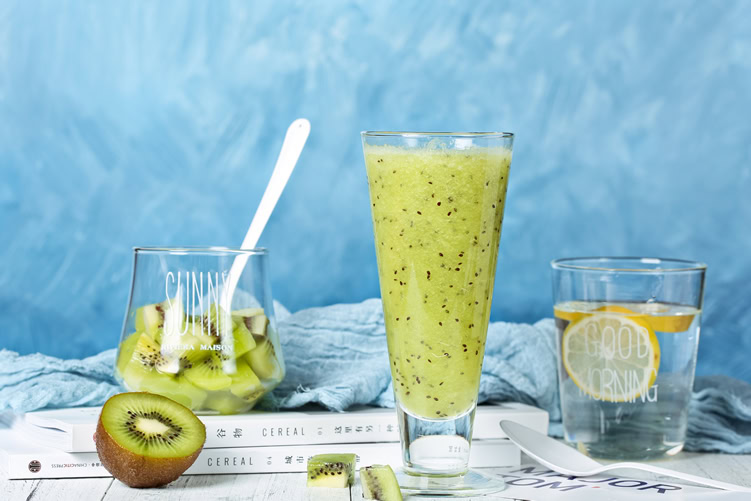
Avant tout, pensez à la la texture que vous recherchez. La gomme gellane à faible teneur en acyle est la solution idéale pour les produits qui nécessitent une texture ferme et cassante. Elle constitue donc un excellent choix pour des produits tels que les desserts structurés ou les substituts de gélatine végétaliens, pour lesquels la précision est essentielle. En revanche, la gomme gellane à haute teneur en acyle crée des gels souples et élastiques, parfaits pour les produits laitiers ou toute autre application nécessitant une texture flexible. Le choix ici aura un impact significatif sur l'expérience sensorielle de votre produit, ce que Shine comprend et exploite dans son processus de développement de produits.
Un autre facteur critique est clarté. Si l'aspect de votre produit est aussi important que sa texture, c'est un facteur que vous ne pouvez pas vous permettre de négliger. La gomme gellane à faible teneur en acyle offre une excellente clarté, ce qui la rend idéale pour les applications nécessitant un gel transparent et visuellement attrayant, comme dans certaines boissons ou certains produits alimentaires décoratifs. La gomme gellane à haute teneur en acyle, bien qu'elle ne soit pas aussi claire, offre une solution plus opaque, ce qui peut être avantageux dans les produits où la clarté n'est pas une priorité.
La stabilité est l'épine dorsale de tout produit réussi, et dans ce domaine, les deux types de gomme gellane brillent par leurs qualités propres. Toutefois, les conditions spécifiques dans lesquelles votre produit sera utilisé ou stocké, telles que les variations de température et les niveaux de pH, peuvent influencer votre décision. Par exemple, les produits destinés à résister à des températures élevées ou à des conditions acides pourraient bénéficier davantage de la nature robuste de la gomme gellane à faible teneur en acyle. Les fabricants et fournisseurs de gomme gellane peuvent fournir des informations précieuses sur la variante qui offre la meilleure stabilité dans les conditions auxquelles votre produit sera confronté.
Enfin, parlons de la compatibilité avec d'autres ingrédients. Votre produit n'est pas seulement constitué de gomme gellane ; c'est une symphonie de composants qui doivent fonctionner harmonieusement. Certains ingrédients peuvent interagir différemment avec la gomme gellane à faible teneur en acyle et avec la gomme gellane à forte teneur en acyle, ce qui affecte le résultat final de votre produit. Consulter les fournisseurs de gomme gellane peut vous aider à mieux comprendre ces interactions et à prendre une décision éclairée qui s'aligne sur les exigences de formulation de votre produit.
En conclusion, le choix entre une gomme gellane à faible teneur en acyle et une gomme gellane à forte teneur en acyle implique un examen minutieux de la texture, de la clarté, de la stabilité et de la compatibilité des ingrédients. En comprenant ces facteurs et en collaborant avec des fabricants et des fournisseurs de gomme gellane expérimentés, vous pouvez vous assurer que votre produit ne se contente pas de répondre aux attentes des consommateurs, mais qu'il les dépasse. L'engagement de Shine en faveur de la qualité et de l'innovation est évident dans la façon dont ces considérations sont prioritaires dans leur processus de développement de produits, garantissant que chaque produit est un témoignage de l'excellence de leur marque.
Études de cas : Applications réussies
L'exploration des applications réelles de la gomme gellane peut fournir des indications précieuses sur la manière dont les différents types de cet ingrédient polyvalent peuvent être utilisés pour améliorer une large gamme de produits. Dans cette section, nous nous penchons sur des études de cas spécifiques où la gomme gellane à faible teneur en acyle et la gomme gellane à forte teneur en acyle ont été mises en œuvre avec succès. Ces exemples illustrent non seulement la polyvalence de la gomme gellane, mais aussi l'expertise des principaux fabricants et fournisseurs de gomme gellane, dont la célèbre marque Shine.
Une application notable de la gomme gellane à faible teneur en acyle concerne une entreprise de boissons populaires qui cherchait à améliorer la stabilité et la texture de ses produits à base d'eau infusée aux fruits. Le défi consistait à maintenir une distribution uniforme des particules de fruits dans toute la boisson sans compromettre la clarté et le goût. En incorporant de la gomme gellane à faible teneur en acyle, obtenue auprès des meilleurs fournisseurs de gomme gellane, la société a pu obtenir une texture ferme, mais agréable au goût, qui maintient les particules de fruits en suspension de manière uniforme. Cela a permis non seulement de renforcer l'attrait esthétique du produit, mais aussi d'améliorer son profil sensoriel global, ce qui a entraîné une hausse significative de la satisfaction des consommateurs et de la part de marché.
D'autre part, l'histoire de la réussite d'une entreprise laitière en matière de gomme gellane à haute teneur en acyle illustre la capacité de l'ingrédient à créer des gels souples et élastiques, idéaux pour les produits laitiers. L'entreprise souhaitait lancer une nouvelle gamme de boissons au yaourt avec une texture unique et crémeuse qui la différencierait de ses concurrents. Après avoir consulté Shine, l'un des principaux fabricants de gomme gellane, l'entreprise a décidé d'incorporer de la gomme gellane à haute teneur en acyle dans sa formule. Il en est résulté un yaourt à boire d'une texture lisse et veloutée inégalée, qui est rapidement devenu le favori des consommateurs pour sa sensation en bouche et sa stabilité, même dans diverses conditions de stockage.
Ces études de cas montrent à quel point le choix entre la gomme gellane à faible teneur en acyle et la gomme gellane à forte teneur en acyle est crucial, en fonction du résultat souhaité pour le produit. Bien que les deux variantes de gomme gellane offrent des avantages uniques, il est essentiel de comprendre les besoins spécifiques de votre produit pour sélectionner le bon type de gomme. Que vous recherchiez une structure de gel ferme ou une consistance plus fluide et élastique, un partenariat avec des fabricants et fournisseurs de gomme gellane expérimentés comme Shine peut avoir un impact significatif sur le succès de votre produit sur le marché concurrentiel.
En outre, la collaboration entre les développeurs de produits et les fournisseurs de gomme gellane est essentielle pour naviguer dans les complexités de la formulation et atteindre les caractéristiques souhaitées du produit. Ces applications réussies soulignent l'importance de choisir un fournisseur qui non seulement fournit de la gomme gellane de haute qualité, mais offre également une assistance technique et une expertise en matière de formulation afin de garantir l'utilisation optimale de cet ingrédient polyvalent dans votre processus de développement de produits.
Conclusion : Faire le bon choix
Après avoir parcouru le monde complexe de la gomme gellane, il est clair que le choix entre les variantes à faible teneur en acyle et celles à teneur élevée en acyle ne se fait pas à pile ou face. Votre décision doit être calculée et influencée par les besoins spécifiques de votre produit, les préférences de votre public cible et les normes que vous souhaitez respecter. Que vous préfériez les gels fermes et cassants de la gomme gellane à faible teneur en acyle ou les textures souples et élastiques de la gomme gellane à forte teneur en acyle, l'essentiel est de comprendre les propriétés uniques de chacune d'entre elles.
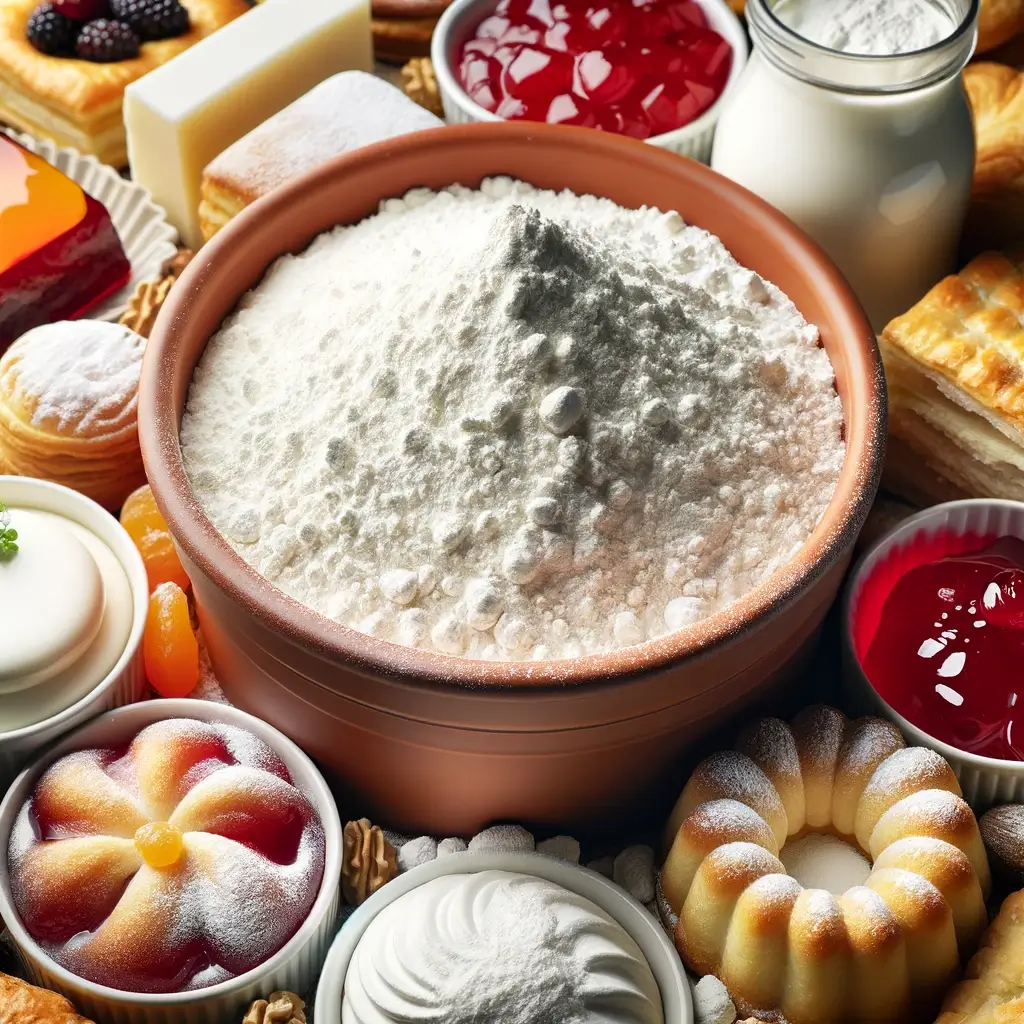
Shine, en tant que marque engagée dans l'excellence et l'innovation, comprend l'importance de faire des choix éclairés. Nous pensons qu'en choisissant le bon type de gomme gellane, les fabricants peuvent améliorer considérablement la qualité et l'attrait de leurs produits. Il ne s'agit pas seulement de savoir ce qui fonctionne, mais ce qui convient le mieux à votre application spécifique. Que vous soyez un fabricant de gomme gellane expérimenté ou un nouveau venu à la recherche de fournisseurs de gomme gellane, l'objectif reste le même : fournir des produits qui se distinguent sur le marché.
Voici quelques réflexions finales à prendre en compte dans votre processus de décision :
- Texture du produit : Souhaitez-vous obtenir une texture spécifique qui ne peut être obtenue qu'avec une gomme gellane à faible teneur en acyle ou à forte teneur en acyle ?
- Clarté et stabilité : Votre produit bénéficie-t-il des gels clairs et stables formés par la technologie gomme gellane à faible teneur en acyleou exige-t-elle la souplesse et l'élasticité de la gomme gellane à haute teneur en acyle ?
- Préférences des consommateurs : Avez-vous étudié les préférences de votre marché cible ? Comprendre ce que vos consommateurs préfèrent peut vous orienter vers la bonne variante.
- Relations avec les fournisseurs : L'établissement d'un partenariat fiable avec les fournisseurs de gomme gellane peut garantir une qualité et un approvisionnement constants de l'ingrédient, ce qui est essentiel pour maintenir les normes du produit.
En conclusion, le choix entre une gomme gellane à faible teneur en acyle et une gomme gellane à teneur élevée en acyle doit être fait en connaissance de cause, sur la base d'une compréhension approfondie des besoins de votre produit et des avantages uniques offerts par chaque type de gomme. Shine encourage les fabricants à s'adresser à des fournisseurs de gomme gellane compétents, à rechercher des fabricants de gomme gellane réputés et à prendre en compte l'expérience du consommateur final dans chaque produit développé. Ce faisant, vous pouvez vous assurer que votre produit ne se contente pas de répondre aux attentes, mais les dépasse, consolidant ainsi la réputation de votre marque en matière de qualité et d'innovation sur un marché concurrentiel.
Questions fréquemment posées
- Qu'est-ce que la gomme gellane et pourquoi est-elle utilisée ?La gomme gellane est un puissant agent gélifiant qui s'est fait remarquer dans l'industrie des aliments et des boissons. Elle est dérivée d'une petite bactérie astucieuse connue sous le nom de "gomme gellane". Sphingomonas elodea. Pourquoi les gens l'aiment-ils ? C'est une question de polyvalence et de texture. Que vous souhaitiez obtenir un gel ferme et cassant ou un délice souple et élastique, la gomme gellane est là pour vous aider, ce qui en fait un produit de choix pour les créateurs culinaires et les innovateurs industriels.
- Comment choisir entre la gomme gellane à faible acyle et la gomme gellane à forte acyle ?Imaginez que vous êtes un artiste et que votre produit est votre toile. La gomme gellane à faible teneur en acyle est comme un stylo à pointe fine, offrant des textures précises et fermes, parfaites pour des pièces structurées et remarquables. À l'inverse, la gomme gellane à haute teneur en acyle est un pinceau large qui crée des textures douces et élastiques pour une sensation plus fluide et plus souple. Le choix se résume au chef-d'œuvre que vous envisagez - s'agit-il plutôt d'une structure audacieuse ou d'une souplesse douce ? Tenez compte des besoins de votre produit en termes de texture, de clarté et de stabilité pour faire votre choix.
- Puis-je utiliser les deux types de gomme gellane dans un même produit ?Absolument ! Pensez-y comme à une expérience culinaire dont vous seriez le savant fou. En mélangeant la gomme gellane à faible teneur en acyle et la gomme gellane à forte teneur en acyle, vous obtiendrez le meilleur des deux mondes : un peu de fermeté ici, un peu d'élasticité là. Il s'agit de trouver l'équilibre parfait pour obtenir la texture qui fera ressortir votre produit. N'oubliez pas qu'il s'agit plus d'un art que d'une science, alors n'ayez pas peur d'expérimenter.
- Existe-t-il des secteurs spécifiques où la gomme Gellan se distingue ?Où la gomme Gellan ne brille-t-elle pas ? Telle est la question la plus simple ! Du monde complexe de la cuisine gastronomique à la vaste étendue de la production alimentaire industrielle, la gomme gellane est le héros méconnu. Elle est particulièrement remarquable dans les produits laitiers, les alternatives à base de plantes et même dans certaines applications non alimentaires comme les cosmétiques et les produits pharmaceutiques. Sa capacité à s'adapter et à fonctionner dans diverses conditions en fait un ingrédient polyvalent.
- Quels sont les exemples concrets d'applications réussies de la gomme gellane ?Imaginez que vous sirotiez un substitut de lait d'origine végétale parfaitement structuré ou que vous mordiez dans un dessert en lui donnant la bonne vibration : c'est la gomme Gellan qui est à l'œuvre. C'est l'ingrédient secret de toute une série de produits, du fromage végétalien qui fond dans la bouche aux boissons qui conservent leur saveur et leur texture. La véritable magie s'opère en coulisses, dans les services de recherche et développement, où la gomme Gellan aide à créer des produits qui répondent aux exigences en constante évolution des consommateurs en matière de texture, de stabilité et d'attrait visuel.
- Comment le choix de la gomme Gellan affecte-t-il la clarté et la stabilité d'un produit ?C'est comme choisir le bon filtre pour votre photo Instagram - l'impact est une question de clarté et de stabilité. La gomme gellane à faible taux d'acyle tend à donner un gel plus clair et plus transparent, ce qui en fait un produit gagnant pour les produits dont l'attrait visuel est essentiel. La gomme High Acyl, avec sa texture plus douce et plus élastique, est une superstar de la stabilité, aidant les produits à maintenir leur intégrité dans diverses conditions. Le choix que vous faites peut faire passer votre produit de bon à digne d'un gramme.
